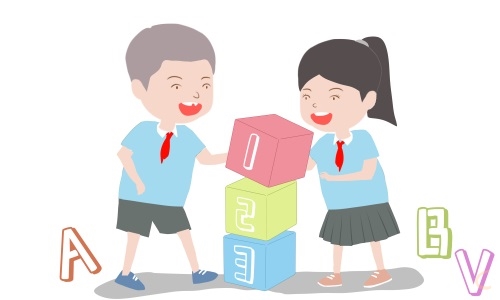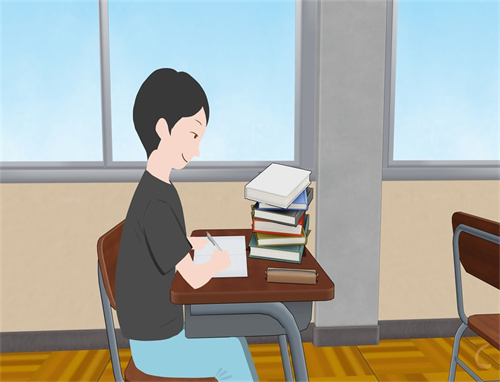6年级上册英语知识点归纳
哈喽,同们注意啦!踏实,是学有所获的前提;勤奋,是学有所进的根本;坚持,是学有所成的途径。以下是小编为大家带来的6年级上册英语知识点归纳,欢迎参阅呀!

6年级上册英语知识点归纳1
一、重点词汇:
hobby爱好 ride a bike骑自行车 dive跳水 play the violin拉小提琴
make kites制作风筝 collect stamps集邮 live居住 teaches教
Watches观看 goes去 does doesn’t=does not
city 城市 county 国家或者乡村 province 省
二、重点句型:
1.What’s your hobby? 你的爱好是什么?
2.I like collecting stamps. 我喜欢集邮。
3.He likes collecting stamps, too.他也喜欢集邮
4.Does she teach English? No, she doesn’t. 她教英语吗? 不。
5.Does she teach you math? Yes, she does.她教你数学吗? 是的。
三、重点语法:
1、动词变为动名词的规则:
动词变为动名词,即是动词加ing。一般要遵循以下三条规则:
(1)一般情况下,在动词的后面直接加ing。如:play-playing read-reading do-doing go-going
(2)以不发音的字母e结尾的动词,要去掉不发音的字母e,再加ing。如:write-writing ride-riding make-making dance-dancing
(3)以单元音加单辅音结尾的重读闭音节,要双写最后一个辅音字母,再加ing。如:run-running swim-swimming put-putting sit-sitting
2、记住like后面要加动词ing,说爱好有三种说法:
①I like swimming
②Swimming is my hobby
③My hobby is swimming
注意:She likes drawing pictures, listening to music and making kites.这几个爱好是并列的,都是在like后面,所以都要加ing.
3、第48页是写自己或者笔友的作文模板4、第49页是写自己或者是其他人一天的作文模板,记住要用一般现在时态。
4、关于第三人称单数:
动词变为第三人称单数形式的规则:
(1)在一个句子中,如果主语人称既不是你,也不是我,而是另外的一个人,这时的人称叫做第三人称单数。
(2)在第三人称单词的句子中,动词要使用第三人称单词形式。
(3)动词变为第三人称单数形式,要遵循以下规则:
①一般情况下,在动词的后面直接加s。如:
read--reads make-makes write-writes
②以字母s, x, o , sh , ch结尾的动词,在词尾加es。如:do-does wash-washe teach-teaches go-goes pass-passes
③以y结尾的动词分为两个情况,以元音字母加y结尾的动词,在词尾直接加s。如:play-plays buy--buys
以辅音字母加y结尾的动词,要把y变为i,再加es.如:study--studies
④以f , fe结尾的名词,先把f,fe变为v,再加-es.
⑤特殊变化:have--has
(4)在一个第三人称单数的句子中,只要句子中出现了does或者其否定形式doesn't.该句子中的其他动词就要使用原形。
(5)第三人称单数的肯定句在变为否定句时,在动词的前面加doesn't. 动词恢复原形。如:He lives in Beijing.---He doesn't live in Beijing.
(6) 第三人称单数的陈述句在变为一般疑问句时,用does开头,后面的动词也要变为原形。如:He lives in Beijing.---Does he live in Beijing?注意:用来does,后面的动词就不能用第三人称形式。
5、注意几个单词的变化:hobby(复数形式)-hobbies have to(同义词)-mus same(反义词)---different look the same 看起来一样
6年级上册英语知识点归纳2
一、重点短语:
Singer歌手 writer作家 actor男演员 actress女演员 artist画家
TV reporter电视台记者 engineer工程师 accountant会计 policeman警察
Cleaner清洁工 salesperson售货员 work工作
二、重点句型:
1.What does your mother do? __妈是干什么的?
2.She is a TV reporter. 她是一个电视播音员。
3.Where does she work? 她在哪儿工作?
4.She works in a school. 她在学校工作。
5.How does she go to work? 她怎么去工作?
6.She goes to work by bus. 她乘公交车去工作。
三、重点语法:
1、一些由动词变化而来的职业名词:
teach-teacher clean-cleaner sing-singer dance-dancer
drive-driver write-writer TV report-TV reporter
act-actor act-actress art-artist engine-engineerplay
basketball/football/baseball-basketball/football/baseball player
2、提问职业有两种方式: What is your father? 或者What does your father do?
3、a/an的区别,跟元音发音有关。例如:a singer/writer/TV reorteran actor/actress/artist/engineer/accountant
4、What are you going to be ?问的是长大想干什么,注意用"be". I'm going to be a …记住p61和63有关职业信息的内容
5、记住几个地点: shoe /car/air-conditioner company? 鞋/汽车/空调公司
6、做"对句子划线部分提问"试题时,一般应该遵循三个步骤:
(1)确定与句子划线部分相应的特殊疑问词,并且特殊疑问词代替相应的划线部分。
(2)把特殊疑问词代替划线部分后的句子变成一般疑问句。
(3)最后再把特殊疑问词提到句首。
以上三个基本步骤可以用三个字来概括,即:定,问,提。例如:This is a book.
①This is what. ②Is this what ③What is this ?
注意:句①②只是一种变化过程,不必写入试题中。句③才是试题所要求的形式和结果,必须写到试题上。以上三个步骤是对句子划线部分提问最基本的过程。
然而对不同句子的不同成份提问时,还要注意以下几点:
(1)如果句子的划线部分是主语,只找出相应的特殊疑问词,用来代替划线部分即可。如:
He teaches us English. Who teaches us English?
My mother's clothes are over there. Whose clothes are over there?
(2)如果句子的划线部分是谓语(包括谓语动词),不论原来的谓语动词是何种形式(时态、语态),都要将谓语动词变为do的相应的形式:不论原来的谓语动词后面跟的是人、 物还是地点,一律用What来代替。如:
They are playing football.
①They are doing what.
②Are they doing what?
③What are they doing?
They wolf is going to kill that man.
①They wolf is going to do what.
②Is the wolf going to do what?
③What is the wolf going to do?
(3)如果句子的划线部分是定语,并且在谓语部分,这时,需将特殊疑问词和紧跟其后的名词一起提到句首。如:
That is his pen.
①That is whose pen.
②Is that whose pen
③Whose pen is that?
对定语划线部分提问题,如果划线部分是所属关系,特殊疑问词用whose;如果划线部分指具体的"某一个"时特殊疑问词用which;如果划线部分指内容或职业时,特殊疑问词用what;如果划线部分指数量时,特殊疑问词用how many(可数)或how much(不可数)。如:
(1) They are the legs of the desk.
①They are whose legs.
②Are they whose legs?
③Whose legs are they?
(2)I like red one.
①You like which one.
②Do you like which one?
③Which one do you like?
(3)They have five English books.
They have how many English books.
Do they have how many English books?
How many English books do they have?
职业男女的称呼区别:actor-actres salesman-saleswoman salesperson 男女售货员都可以 mailman-mailperson
6年级上册英语知识点归纳3
一、单词:suitcase(复数)suitcases, arrive(过去式)arrived, live(单三)lives, want(单三)wants,come(现在分词)coming,five(序数词)fifth
二、 课文重难点:
1. at表示“在某处”,一般指较小的比较具体的地点。如at school 、at home 2. This is “这是某某”这句型在这里用来介绍他人。This is my friend.
3. want 想要 want to do sth. 想干某事 如:I want to go home.我想回家。
4. What time is it now? It’s 11:30.现在几点了?现在11:30.
5. Did you have a good trip? Yes,thanks.你旅行愉快吗?是的,谢谢。
6. Let’s go home./ Let me help you.让我们回家。让我帮助你。
7. learn English 学英语
Lesson 2 Jenny’s house
一、单词:kitchen, room, bathroom, bedroom, living room
二、 课文重难点:
1. This is / That is / These are/ Here is/ Here are
2. What’s in the bedroom? 卧室里有什么? 3、second floor 二楼
Lesson 3 Making breakfast
一、单词:refrigerator(fridge), sink水槽,make(现在分词)making(过去分词)made, dish(复数)-dishes,cook(现在分词)-cooking、stove炉子
二、课文重难点:
1. Time for breakfast.= It’s time for breakfast.早餐时间到了。
2. It’s time for sth./ It’s time to do sth.是做什么的时间了。
3. Would like sth./ Would like to do sth.想要什么。想要做什么。
4. What would you like for breakfast / lunch/supper? I would like…
5. Breakfast is ready. wash dishes make breakfast/lunch/supper
6. in the kitchen / refrigerator /sink on the stove / table
Lesson 4 Making supper
一、单词:dry-wet, dirty-clean,eat-ate
二、课文重难点:
1. What’s for supper?晚餐有什么?
2. What are you doing? / We are washing hands. 你正在做什么?我们正在洗手。What are they doing?
3. You can dry your dishes. / The dishes are dry.
4. Let’s wash the dishes.让我们洗盘子吧。
5. May I help you? Sure.我可以帮你吗?当然。
Lesson 5 In the living room
一、单词:watch(现分)-watching, sit(现分)-sitting, read(现在分词)-reading, write(现在分词)-writing, do(现在分词)-doing, play(现在分词)---playing,
二、课文重难点:
1.watch TV / read the newspaper/write a letter
2.What else can you find in the living room?
3. Do you like this show? Yes,I do/No,I don’t.
4. in the corner. Everyone in the living room is quiet.
Lesson 7 On the school bus
一、单词:always,usually, sometimes, never, bus stop, bus driver, school bus
三、课文重难点:
1. 祈使句:Don’t go there./ Don’t forget your umbrellas.
2. 频率副词用法:一般都放在行为动词之前,助动词和情态动词之后。
如:He never wears dresses./ I never walk.
1. I live too far from school. on the school bus.
2. Do you usually go to school by …?
Lesson 8 Li Ming meets Jenny’s class
一、单词:same(反义词)different,subject,class,math\science\art\PE\music, have lunch\supper\breakfast
二、课文重难点:
1. Where are you from?I am from China.你来自哪里?我来自中国。
2、what subjects do you have in your school?we have math...
3、How many classes do you have each school day? Three classes in the morning and two in the afternoon.
Lesson 9 Mr.Wood teaches a lesson
一、单词:temperature, shape(形状), line, circle, square, triangle,degree(复数)degrees,hot(反义词)cold,outside(反义词)inside,ill、healthy健康的
三、课文重难点:
1. How’s the weather today? It’s rainy.今天天气怎样?多雨。
2. What’s the temperature? It’s ten degrees.气温多少度?十度。
3. What’s your favourite shape? My favourite shape is a circle.
4. How many lines make a triangle? Three.
Lesson 10 How many are there?
一、单词: man(复数)---men, woman(复数)---women, child(复数)---children
二、课文重点、难点:
1. This is a … / These are (some/many) …That is a … / Those are …
2. Here is a … / Here are (some/many) …
3. How many pens are there? There are ten pens。
Lesson 11 Always do your homework!
一、单词: wear(同音词)where。two(同音词)too
二、课文重难点:
1. Do you always…? / Does he usually…?
2. walk to school / help his mother / ride my bike / do your homework
3. the same questions/ by bus / take the bus
4. Let’s put…for…/ Let’s put…in…
5、in Canada / on a rainy day / read a book / sing a song
6、 How many triangles do you see?
Lesson 13 Seasons
一、单词: spring, summer, fall(autumn), winter, scarf, ice, winter clothes、leaf(复数)---leaves, rain(形容词)rainy, wind(形容词)windy, sun(形容词)sunny, snow(形容词)snowy,cloud(形容词)cloudy
三、课文重点、难点:
1. What a hot, sunny day!多么热、晴朗的天啊! put on / take off
2,put on 表示穿的动作,wear表示“穿着”的状态。如:Please put on your sweater. / He wears a red jacket today.
3. There are four seasons in a year.
4. I like the rain, but I don’t like to get wet.
5. What do you wear in winter / spring / summer / fall?
Lesson 14 Snow! It’s winter!
一、写单词: ski(现在分词)skiing, teach(对应词)learn, outside(反义词)inside, forget(过去式)forgot, put(现在分词)putting、skate滑冰、ski滑雪
二、课文重点、难点:
1. November ninth 九月九日
2. Jenny and Li Ming are getting ready for school.
3. Snow is falling.
4. Look out (of) the window! 朝窗外看!
5. What do you like to do in winter?
6. I like to skate on the ice. / I like to ski on the snow.
7. Can you skate? / Can you teach me?
8. I want to go outside to play in the snow.
9. Why? Because it’s cold outside.
10. Let’s go outside! / Let’s go inside!
11. There he comes.吆,他来了。/ There! 瞧
Lesson 15 Winter fun
一、单词:snowman(复数) snowmen, snowball(复数)snowballs, stick(复数)sticks, rock(复数)rocks, small(比较级)smaller
二、课文重点、难点、疑点解析:
1. Do you know what a snowman is?
2. make a face / make a big ball of snow / make snowmen / make a snowman
3. put…on…/ put…on top I think I can.
4. What else do you do in winter in China?
5. I have two sticks for his arms.
6. A is smaller than B.
Lesson 16 A skating lesson
一、单词:think, teach,fall down
二、课文重点、难点:
1. a skating lesson / a skiing lesson. 滑冰课、滑雪课
2. Can you skate forwards?
3. a pair of skates. / put on your skates. / put them on.
4. Danny is walking forwards / backwards.
5. turn around
6.Li Ming skates backwards slowly.
7.stand up / come on / fall down
8. teach sb to do sth. You learn fast.
Lesson 17 I like all seasons
一、会说会读会写单词: fun, favourite
二、课文重点、难点:
1. What’s your favourite …?
2. I like to do sth.我喜欢去做某事。
3. Do you like to do sth?你喜欢做什么?
4. I love spring,do you?我喜欢春天,你呢?
5. Temperatures are cool.气温是凉爽的。
Lesson 19 Christmas is coming
一、单词:Christmas, Christmas tree(s), Christmas lights, holiday, song, card(s), gift(s), Santa, special,bring(单三)brings, west(形容词)western
三、课文重点、难点:
1. What’s Christmas? It’s a Western holiday.圣诞节是什么?是西方的节日。
2. Who is Santa? He is a merry man in red clothes.
3. on/at Christmas Merry Christmas!
4. invite sb to someplace. 如:We invite family and friends to our house.
5. bring sth for sb. 如:They bring gifts for us.
6. give sb sth. 如:We give our family and friends gifts,too.
7. sing special songs. We have fun together.我们在一起很愉快。
8. When is Christmas? It’s December twenty-fifth.
Lesson 20 Oh, Christmas tree
一、单词:be(过去式)-was/were, see(过去式)-saw, bring(过去式)-brought,know(过去式)-knew, teach(过去式)-taught, grow(过去式)---grew, put(过去式)---put, teach(名词)teacher quiet(副词)---quietly, quick(副词)---quickly, slow(副词)---slowly、loud(副词)--- loud ly
二.重难点: Christmas tree 圣诞树 / Christmas gifts 圣诞节礼物
1. What would you like? I would like… / What would you like to do? I would like to buy a gift.
2. see you soon/later/tomorrow.
3. Today we are putting up the Christmas tree.
4. That is an old story.
5. We open our gifts. bring sb sth. take pictures.
Is it from China? It’s a Chinese lantern.
6. I asked my mother to send it. / ask sb to do sth.
7. be going to do sth. / What are you going to do?
Lesson 21 Christmas cards
6年级上册英语知识点归纳4
一、名词复数规则
1.一般情况下,直接加-s,如:book-books, bag-bags, cat-cats, bed-beds
2.以s. x. sh. ch结尾,加-es,如:bus-buses, box-boxes, brush-brushes, watch-watches
3.以“辅音字母+y”结尾,变y为i, 再加-es,如:family-families, strawberry-strawberries
4.以“f或fe”结尾,变f或fe为v, 再加-es,如:knife-knives 5.不规则名词复数: man-men, woman-women, policeman-policemen, policewoman-policewomen, mouse-mice child-children foot-feet,.tooth-teeth fish-fish, people-people, Chinese-Chinese, Japanese-Japanese
二、一般现在时
1.一般现在时表示经常或习惯性的动作,也可表示现在的状态或主语具备的性格和能力。
2.一般现在时中,没有be动词和情态动词,主语为第三人称单数的肯定句,动词要按规则加上s,主语是非第三人称单数的肯定句,动词用原形。
3.在一般现在时中,句中有be动词或情态动词时,否定句在be动词和情态动词后加not,一般疑问句将be动词或情态动词放在句首。 4.在一般现在时中,句中没有be动词或情态动词时,主语为第三人称单数的否定句在动词前加does+not (doesn‘t),一般疑问句在句首加does,句子中原有动词用原形;主语为非第三人称单数,否定句用do+not (don’t),一般疑问句在句首加do,句子中动词用原形。 动词+s的变化规则
1.一般情况下,直接加-s,如:cook-cooks, milk-milks
2 .以s. x. sh. ch. o结尾,加-es,如:guess-guesses, wash-washes, watch-watches, go-goes
3.以“辅音字母+y”结尾,变y为i, 再加-es,如:study-studies 三、现在进行时
1.现在进行时表示现在正在进行或发生的动作,也可表示当前一段时间内的活动或现阶段正在进行的动作。
2.现在进行时的肯定句基本结构为be+动词ing.
3.现在进行时的否定句在be后加not。
4.现在进行时的一般疑问句把be动词调到句首。
动词加ing的变化规则
1.一般情况下,直接加ing,如:cook-cooking
2.以不发音的e结尾,去e加ing,如:make-making, taste-tasting
3.如果末尾是一个元音字母和一个辅音字母,双写末尾的辅音字母,再加ing,如:run-running, stop-stopping
四、be going to
1.be going to 表示将要发生的事或打算、计划、决定要做的事情。
2.肯定句:be going to +动词原形,如:Jim is going to play football. 否定句:be not going to +动词原形,如:Jim is not going to play football. 一般疑问句:把be动词调到句首,如:Is Jim going to play football? 特殊疑问句:疑问词+be+主语+going to+动词原形?如:What is Jim going to do? 疑问词当主语时:疑问词+be+going to+动词原形?如:Who is going to play football?
五、一般过去时
1.一般过去时表示过去某个时间发生的动作或存在的状态,常和表示过去的时间状语连用。一般过去时也表示过去经常或反复发生的动作感谢。
2.Be动词在一般过去时中的变化: ⑴am 和is在一般过去时中变为was。(was not=wasn‘t) ⑵are在一般过去时中变为were。(were not=weren’t) ⑶带有was或were的句子,其否定、疑问的变化和is, am, are一样,即否定句在was或were后加not,一般疑问句把was或were调到句首。
3.句中没有be动词的一般过去时的句子 否定句:didn‘t +动词原形,如:Jim didn’t go home yesterday. 一般疑问句:在句首加did,句子中的动词过去式变回原形。如:Did Jim go home yesterday? 特殊疑问句: ⑴疑问词+did+主语+动词原形?如: What did Jim do yesterday? ⑵疑问词当主语时:疑问词+动词过去式?如:Who went to home yesterday?
动词过去式变化规则:
1.一般在动词末尾加-ed,如:pull-pulled, cook-cooked
2.结尾是e加d,如:taste-tasted
3.末尾只有一个元音字母和一个辅音字母的重读闭音节,应双写末尾的辅音字母,再加-ed,如:stop-stopped
4.以“辅音字母+y”结尾的,变y为i, 再加-ed,如:study-studied
5.不规则动词过去式: am,is-was, are-were, do-did, see-saw, say-said, give-gave, get-got, go-went, come-came, have-had, eat-ate, take-took, run-ran, sing-sang, put-put, make-made, read-read, write-wrote, draw-drew, drink-drank, fly-flew, ride-rode, speak-spoke, sweep-swept, swim-swam, sit-sat
6年级上册英语知识点归纳5
Unit 1 How do you go to school?
主要单词:by plane 坐飞机 by ship 坐轮船 on foot步行 by bike 骑自行车 by bus 坐公共汽车 by train 坐火车 traffic lights交通灯 traffic rules交通规则 Stop at a red light 红灯停 Wait at a yellow light 黄灯等 Go at a green light 绿灯行
主要句子:
How do you go to school?你怎么去上学?
Usually I go to school on foot. Sometimes I go by bus.
通常我步行去上学。有时候骑自行车去。
How can I get to Zhongshan Park ?我怎么到达中山公园?
You can go by the No. 15 bus.你可以坐15路公共汽车去。
知识点:
1、There are many ways to go somewhere.到一个地方去有许多方法。
这里的ways一定要用复数。因为there are是There be句型的复数形式。
2、get to到达.关 本单元我们还要学习与get相关的短语:
get on 上车 get off下车
3、on foot 步行 乘坐其他交通工具大都可以用介词by…, 但是步行只能用介词on 。
4、go to school的前面绝对不能加the,这里是固定搭配。
5、USA 和 US 都是美国的意思。另外America也是美国的意思。
6 go to the park前面一定要加the.如果要去的地方有具体的名字,就不能再加the , 如果要去的地方没有具体名字,由要在前面加the. go to school除外。
7、How do you go to …?你怎样到达某个地方?如果要问的是第三人称单数,则要用:How does he/she…go to …?
8、反义词:
get on(上车)---get off(下车) near(近的)—far(远的) fast(快的)—slow(慢的) because(因为)—why(为什么)
same(相同的)—different(不同的)
9、近义词:
see you---goodbye sure---certainly---of course
10、频度副词:
always 总是,一直 usually 通常 often经常 sometimes 有时候 never 从来不
Unit 2 Where is the science museum?
主要单词:library 图书馆 post office 邮局 hospital医院 cinema 电__ bookstore书店 science museum科学博物馆 turn left向左转 turn right 向右转 go straight 直行 north北 south南 east东 west西
主要句子:
Where is the cinema, please? 请问电__在哪里?
It’s next to the hospital. 它与医院相邻。
Turn left at the cinema, then go straight. It’s on the left.
在电__向左转,然后直行。它在左边。
知识点:
1、near 表示在附近,next to 表示与…相邻。它的范围比near小。
2、电__在英语中称为“cinema”,在美语中称为movie theatre.
3、for 表示持续多长时间,当表示做某事多长时间都要用for. 如:Walk east for 5 minutes.
4、当表示某个地方在另一个地方的哪一方向时,要用介词of。如:the hospital is east the cinema. 医院在电__的东边。
5、表示在哪儿转时,用介词at。 如:Turn left at the bank。在银行左转。
6、find表示“找到”,强调找的结果。Look for 表示“寻找”,强调找的过程。
7、英文的书信与中文的书信不完全一样:
开头:英语是在人称后面加逗号,中文是加冒号。
正文:英语是顶格写,中文要空两个格。
结尾:英语的落款与人名是顶格而且是分开写的。中文则是另起一行,放在一起且稍靠后一点儿的地方。
8、近义词:
bookstore==bookshop 书店 go straight==go down直行
after school==after class 放学后
9、反义词或对应词:
here (这里)---there(那里)
east(东)---west(西) north(北)---south(南)
left(左)---right(右) get on (上车)---get off(下车)
10、in the front of…表示在…的前面,是指在该地方的范围内,in front of而则表示在该地方的范围外。如:in front of our classroom是指在教室的外面而且在教室的前面。而in the front of classroom则是指在教室里的前面。
11. be far from…表示离某地远. be 可以是am , is ,are。如:I am far from school now. 我现在离学校很远。
My home is not far from school.我家离学校不远。
6年级上册英语知识点
上一篇:2023小升初英语知识点总结
下一篇:返回列表






